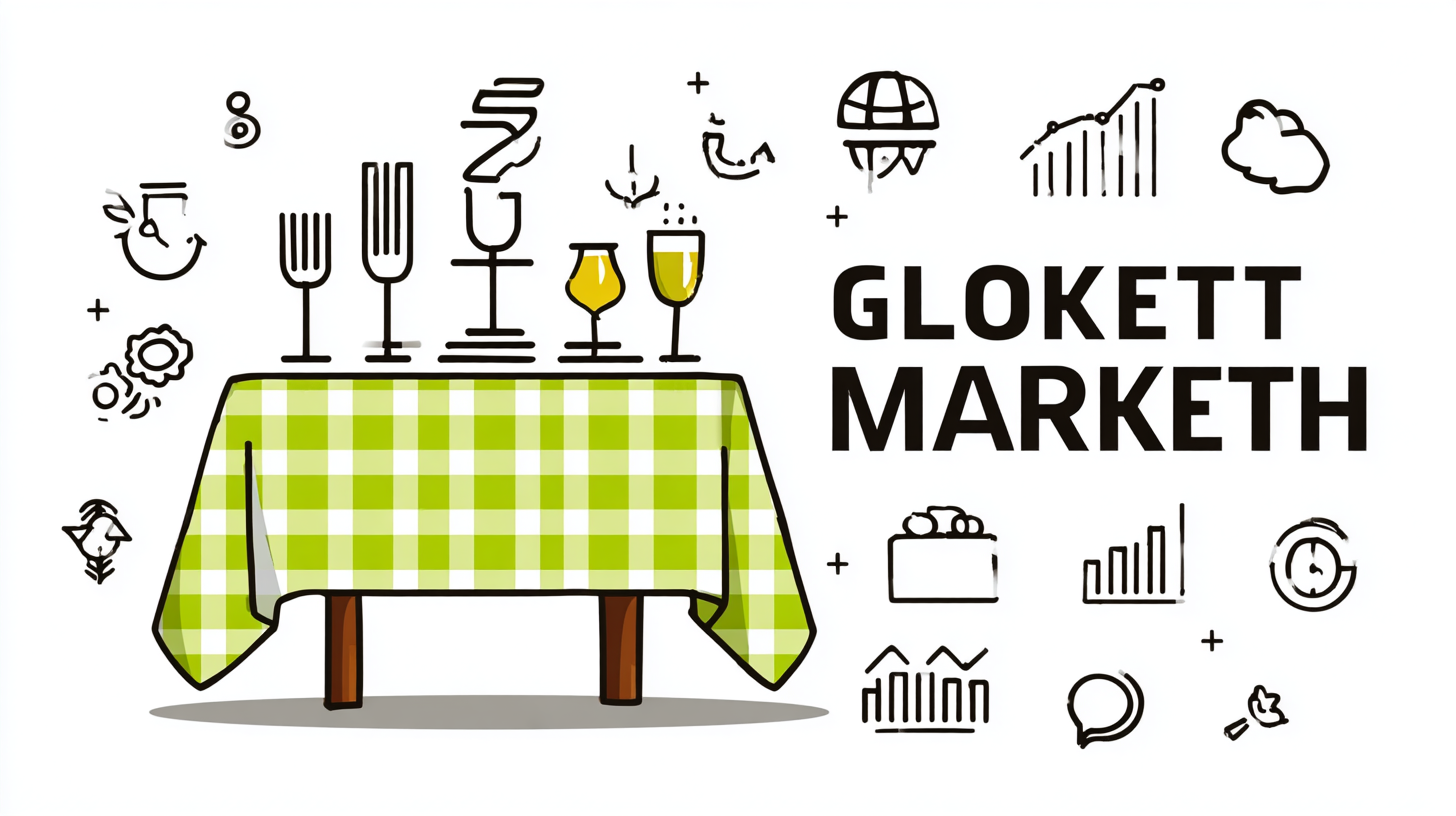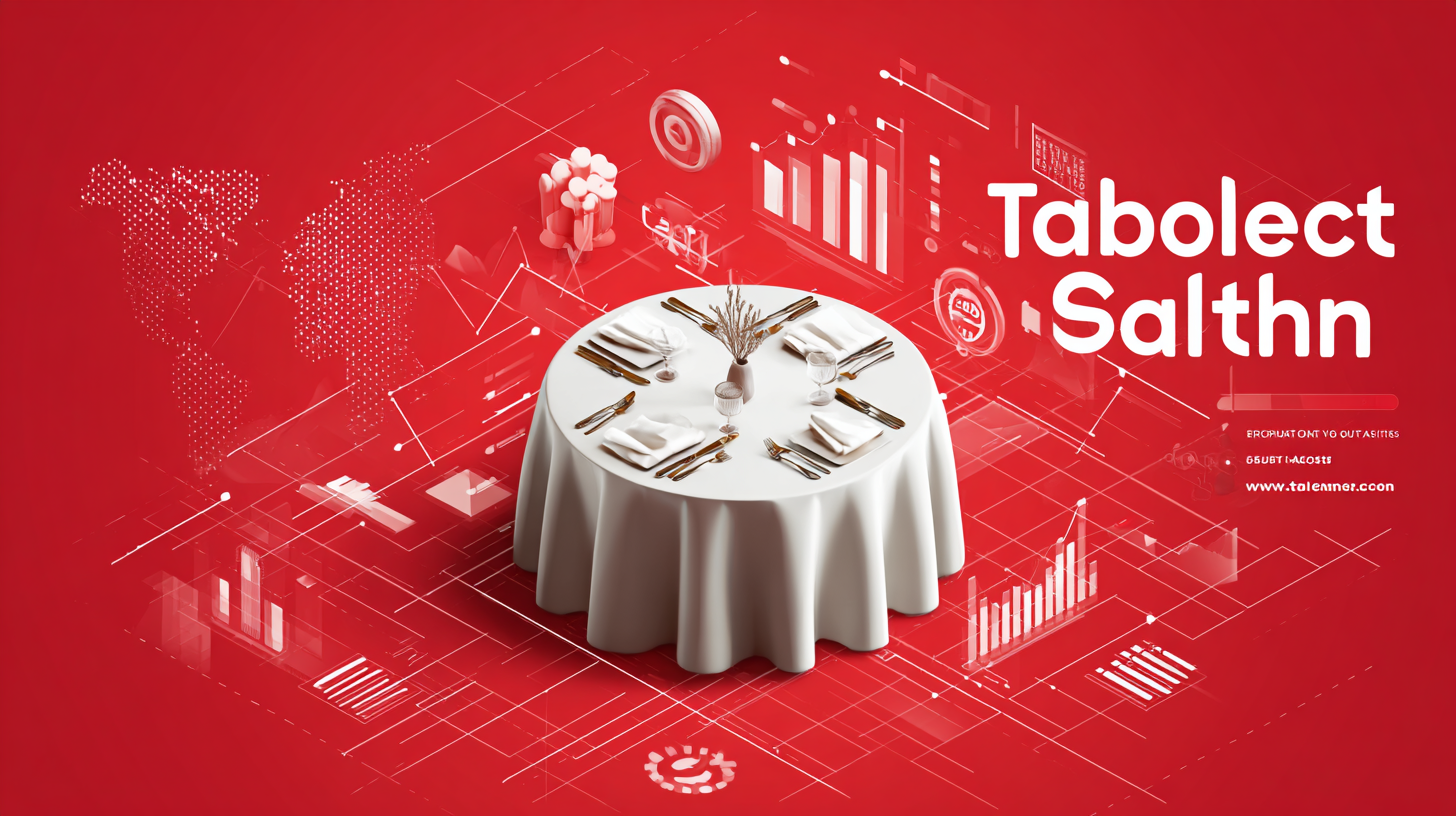The rapidly evolving landscape of tablecloth sizing market is expected to shape procurement strategies significantly by 2025. With industry reports projecting a compound annual growth rate (CAGR) of approximately 5% over the next few years, understanding the nuances of tablecloth sizing is crucial for stakeholders seeking to optimize their offerings.
 As consumer preferences shift towards sustainable and customizable options, the demand for alternatives in tablecloth sizing is becoming prominent. Market research highlights that a significant portion of revenue will be driven by innovative designs and versatile applications across hospitality and event sectors. This blog will delve into the future trends influencing tablecloth sizing and provide insights into how businesses can adapt to meet the evolving needs of their clientele.
As consumer preferences shift towards sustainable and customizable options, the demand for alternatives in tablecloth sizing is becoming prominent. Market research highlights that a significant portion of revenue will be driven by innovative designs and versatile applications across hospitality and event sectors. This blog will delve into the future trends influencing tablecloth sizing and provide insights into how businesses can adapt to meet the evolving needs of their clientele.
The tablecloth market is evolving rapidly, with significant shifts in material preferences and sizing trends expected to dominate by 2025. As sustainability becomes a paramount concern for consumers, many are gravitating towards eco-friendly alternatives. Materials such as organic cotton, recycled polyester, and even innovative options like hemp and bamboo are gaining traction. These alternatives not only enhance the aesthetic appeal of dining experiences but also contribute positively to the environment, appealing to the growing demographic of eco-conscious consumers.
Sizing trends are also adapting to the needs of modern consumers who seek flexibility and customization. With the rise of multipurpose dining spaces and varying table styles, there is a growing demand for versatile sizing options. The market is witnessing an increase in adjustable and stretchable tablecloths, designed to fit various table shapes and sizes effortlessly. This trend reflects a broader shift towards personalized home décor, where individuals can express their unique style while ensuring functionality in their dining setups. As we move forward, brands that focus on innovation in materials and sizing will undoubtedly find a competitive edge in this dynamic market.
As the global tablecloth market evolves, sustainable practices are increasingly influencing sizing trends. With growing awareness of environmental issues, consumers are seeking products that align with their sustainability values. This shift has prompted manufacturers to invest in eco-friendly materials and production techniques, such as organic cotton and recycled polyester. Consequently, proper tablecloth sizing is becoming crucial, as businesses aim to reduce waste while ensuring functionality and aesthetic appeal for diverse settings.
Moreover, the impact of these sustainable practices extends beyond just materials. The demand for adjustable and multipurpose tablecloths is on the rise, catering to the needs of various events and dining experiences. Consumers are now favoring designs that can adapt to different table dimensions, promoting longer use and reducing the need for multiple purchases. As the 2025 horizon approaches, understanding these trends will be key for businesses aiming to thrive in a market that values both ecological responsibility and practical utility.
| Region | Market Size 2023 (Million USD) | Projected Growth Rate (2023-2025) | Sustainable Practices Adoption (%) | Revenue Contribution from Eco-friendly Products (%) |
|---|---|---|---|---|
| North America | 250 | 5.0% | 60% | 40% |
| Europe | 300 | 4.5% | 65% | 45% |
| Asia-Pacific | 200 | 6.5% | 50% | 30% |
| Latin America | 150 | 7.0% | 55% | 35% |
| Middle East & Africa | 100 | 5.8% | 45% | 25% |
In the evolving landscape of the tablecloth market, customer preferences have emerged as a crucial driver for innovation, particularly in sizing. As consumers increasingly seek to personalize their dining experiences, the demand for customized tablecloth sizing has skyrocketed. This shift indicates a movement away from the traditional one-size-fits-all approach, pushing manufacturers to explore ways to accommodate various table dimensions, styles, and even themes.

Customization not only caters to individual needs but also enhances the overall aesthetic of a space, making it more inviting and tailored to specific occasions. As businesses adapt to these changes, they are compelled to invest in flexible production methods and technology that enable them to deliver diverse sizing options efficiently. This trend is not just a fleeting adjustment; it's a significant pivot that reflects a broader shift towards personalization in consumer goods, signaling a robust future for the tablecloth industry as it incorporates customer feedback directly into its design and manufacturing processes.
The tablecloth production industry is on the brink of significant transformation, driven by technological innovations that enhance both manufacturing efficiency and product customization. From digital printing techniques to automated cutting machines, these advancements enable manufacturers to create intricate designs and personalized sizes that cater to varying consumer preferences. As sustainability becomes a focal point, eco-friendly materials and processes are also gaining traction, allowing brands to appeal to environmentally conscious consumers while maintaining high-quality standards.
Additionally, the integration of smart technologies in the production line is revolutionizing how tablecloths are designed and created. Enhanced software tools facilitate the rapid prototyping of new styles, enabling quicker turnaround times for trends and reducing waste through more efficient production methods. Furthermore, the rise of e-commerce platforms is changing the way consumers purchase tablecloths, pushing companies to adopt innovative strategies that leverage data analytics for targeted marketing and inventory management. As we look towards 2025, it's clear that these technological innovations will not only shape product offerings but will also redefine customer engagement within the industry.
In the rapidly evolving tablecloth sizing market, a keen analysis of the strategies employed by key players reveals significant trends shaping the landscape for 2025. As consumer preferences shift towards customization and sustainable materials, industry leaders are innovating their product offerings to address these emerging demands. Companies are increasingly investing in advanced sizing technologies that enable customers to select tablecloths that perfectly fit their specific needs, thus enhancing the overall consumer experience.
Moreover, the market is witnessing a pronounced shift towards eco-friendly fabrics. As awareness of environmental issues grows, leading manufacturers are adopting sustainable practices and incorporating organic materials into their production processes. This strategic pivot not only meets consumer expectations but also aligns with global procurement trends focused on sustainability. By foreseeing these changes, companies position themselves effectively, ensuring that they are not only relevant but also leaders within the competitive tablecloth sizing market as we approach 2025.

